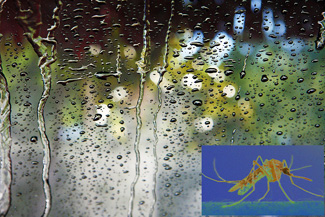A four-year, $2 million grant from the National Institute of Allergy and Infectious Diseases (NIAID) will support research at UC Santa Cruz on climate change and the transmission of mosquito-borne diseases, including West Nile virus.
A. Marm Kilpatrick, assistant professor of ecology and evolutionary biology, leads the project, which aims to understand the effects of climate and climate change on the distribution of West Nile virus in North America and its impact on public health. In addition to Kilpatrick, the collaborators include Noah Diffenbaugh of Stanford University and Laura Kramer of the New York State Department of Health.
"One thrust of the project is to find out what the climatic factors are that determine whether it's going to be a bad year for West Nile virus," Kilpatrick said.
West Nile virus is a bird virus that can be transmitted to people by mosquitoes. After the first U.S. cases appeared in New York in 1999, the virus quickly spread across North America. Most infections in people cause no symptoms or only a mild illness, but severe cases involving encephalitis (inflammation of the brain) can be fatal.
Understanding the effects of climate change on a disease like West Nile virus is complicated, because increasing temperature and changes in rainfall can have both positive and negative effects on transmission of the virus by mosquitoes, Kilpatrick said. In addition, the virus is transmitted by different species of mosquito in different parts of the country.
"The climatic influences on transmission differ by region, depending on the species of mosquito that transmits it," Kilpatrick said. "We will need to study transmission on a local scale, and then apply our understanding of the climatic influences on transmission to a scale that is relevant for public health."
The project will involve laboratory experiments similar to studies by Kilpatrick and Kramer on the effects of temperature on West Nile virus (see earlier story), as well as analyses of climatic and public health data. One long-term goal is to use climate projections to predict the effects of climate change on the distribution of West Nile virus in North America and the intensity of transmission across the United States.



